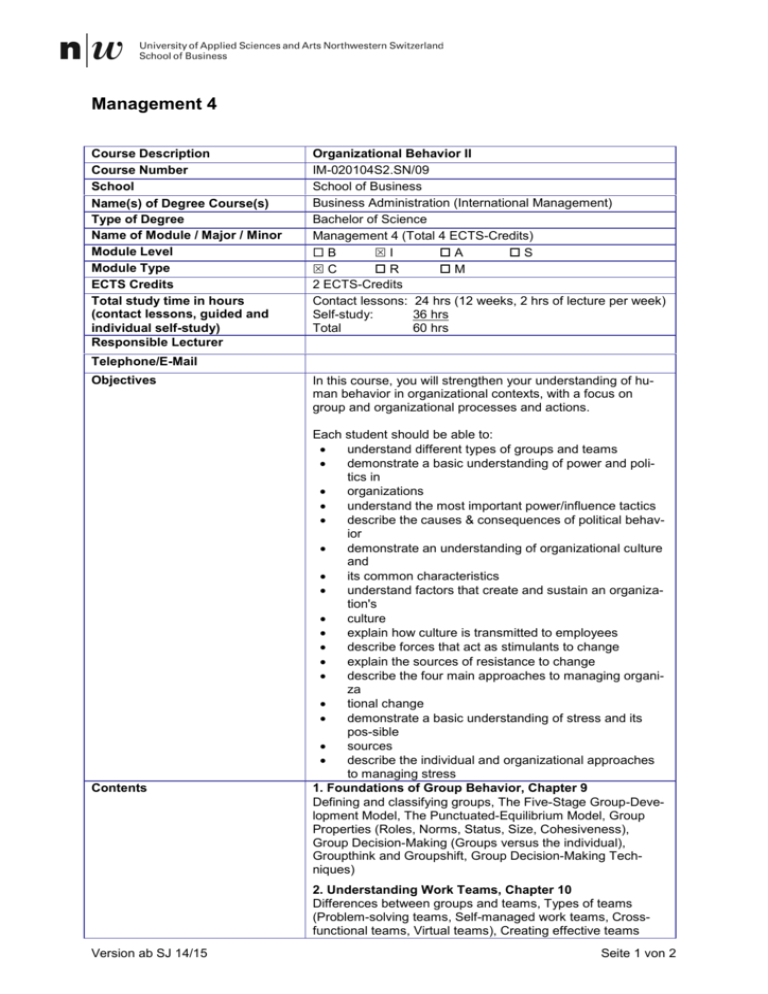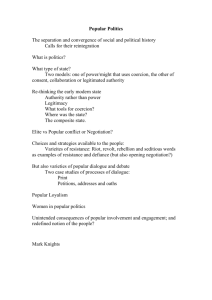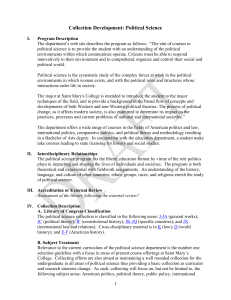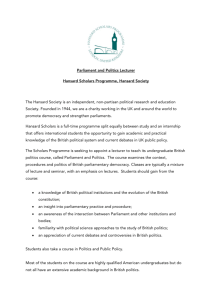Organizational Behaviour II
advertisement

Management 4 Course Description Course Number School Name(s) of Degree Course(s) Type of Degree Name of Module / Major / Minor Module Level Module Type ECTS Credits Total study time in hours (contact lessons, guided and individual self-study) Responsible Lecturer Organizational Behavior II IM-020104S2.SN/09 School of Business Business Administration (International Management) Bachelor of Science Management 4 (Total 4 ECTS-Credits) B I A S C R M 2 ECTS-Credits Contact lessons: 24 hrs (12 weeks, 2 hrs of lecture per week) Self-study: 36 hrs Total 60 hrs Telephone/E-Mail Objectives Contents In this course, you will strengthen your understanding of human behavior in organizational contexts, with a focus on group and organizational processes and actions. Each student should be able to: • understand different types of groups and teams • demonstrate a basic understanding of power and politics in • organizations • understand the most important power/influence tactics • describe the causes & consequences of political behavior • demonstrate an understanding of organizational culture and • its common characteristics • understand factors that create and sustain an organization's • culture • explain how culture is transmitted to employees • describe forces that act as stimulants to change • explain the sources of resistance to change • describe the four main approaches to managing organiza • tional change • demonstrate a basic understanding of stress and its pos-sible • sources • describe the individual and organizational approaches to managing stress 1. Foundations of Group Behavior, Chapter 9 Defining and classifying groups, The Five-Stage Group-Development Model, The Punctuated-Equilibrium Model, Group Properties (Roles, Norms, Status, Size, Cohesiveness), Group Decision-Making (Groups versus the individual), Groupthink and Groupshift, Group Decision-Making Techniques) 2. Understanding Work Teams, Chapter 10 Differences between groups and teams, Types of teams (Problem-solving teams, Self-managed work teams, Crossfunctional teams, Virtual teams), Creating effective teams Version ab SJ 14/15 Seite 1 von 2 (Context, Composition, Work design, Process); Turning individuals into team players, Beware: Teams aren't always the answer 3. Power and Politics, Chapter 14 Part 1: Power: Definition of power, Contrasting leadership and power, Bases of power (Formal power and personal power), The dependency postulate (Importance, scarcity, non-substitutability), The nine power/influence tactics, Sexual harassment: Unequal power in the workplace Part 2: Politics: Power in action, Definition of organizational politics, The reality of politics; Causes and consequences of political behavior (Individual/organizational factors), Employee responses to organizational politics; Impression management 4. Organizational Culture. Chapter 17 Institutionalization: A forerunner of culture, Definition of organizational culture, Strong versus weak cultures, Culture versus formalization, Culture's functions; Culture as a liability (Barriers to change/diversity/acquisitions and mergers), Creating and sustaining culture, Keeping a culture alive (Selection, Top Management, Socialization), How employees learn culture (Stories, Rituals, Material Symbols, Language); Creating a positive organizational culture Language 5. Organizational Change and Stress Management, Ch. 19 Part 1: Organizational Change: Forces for change, Planned change, Resistance to change, Overcoming resistance to change, The politics of change, Approaches to managing organizational change (Lewin's three-step model, Kotter's eight-step plan for implementing change, Action research, Org.development), Creating a culture of change (Stimulating a culture of innovation, Creating a learning organization) Part 2: Stress Management: What is stress? (Definition), Potential sources of stress (A model of stress), Individual differences, Consequences of stress, Managing stress - Lectures - Class discussions - Group work/case studies - Presentations English Assessment(s) Written examination: 60 minutes Methods Weight: according to no. of credits Date of module examination: End of semester References Required Book ORGANIZATIONAL BEHAVIOR, European Edition, 2010, by Stephen P. Robbins, Timothy A. Judge, Timothy T. Campbell; Publisher: Pearson, ISBN 0-273-73963-8 Further Reading Handouts (distributed by the lecturer) General Requirements or Previous Module(s) / Course(s) Subsequent Module(s)/Course (s) Organizational Behavior I (Management 2) - Remarks Version ab SJ 14/15 Seite 2 von 2








